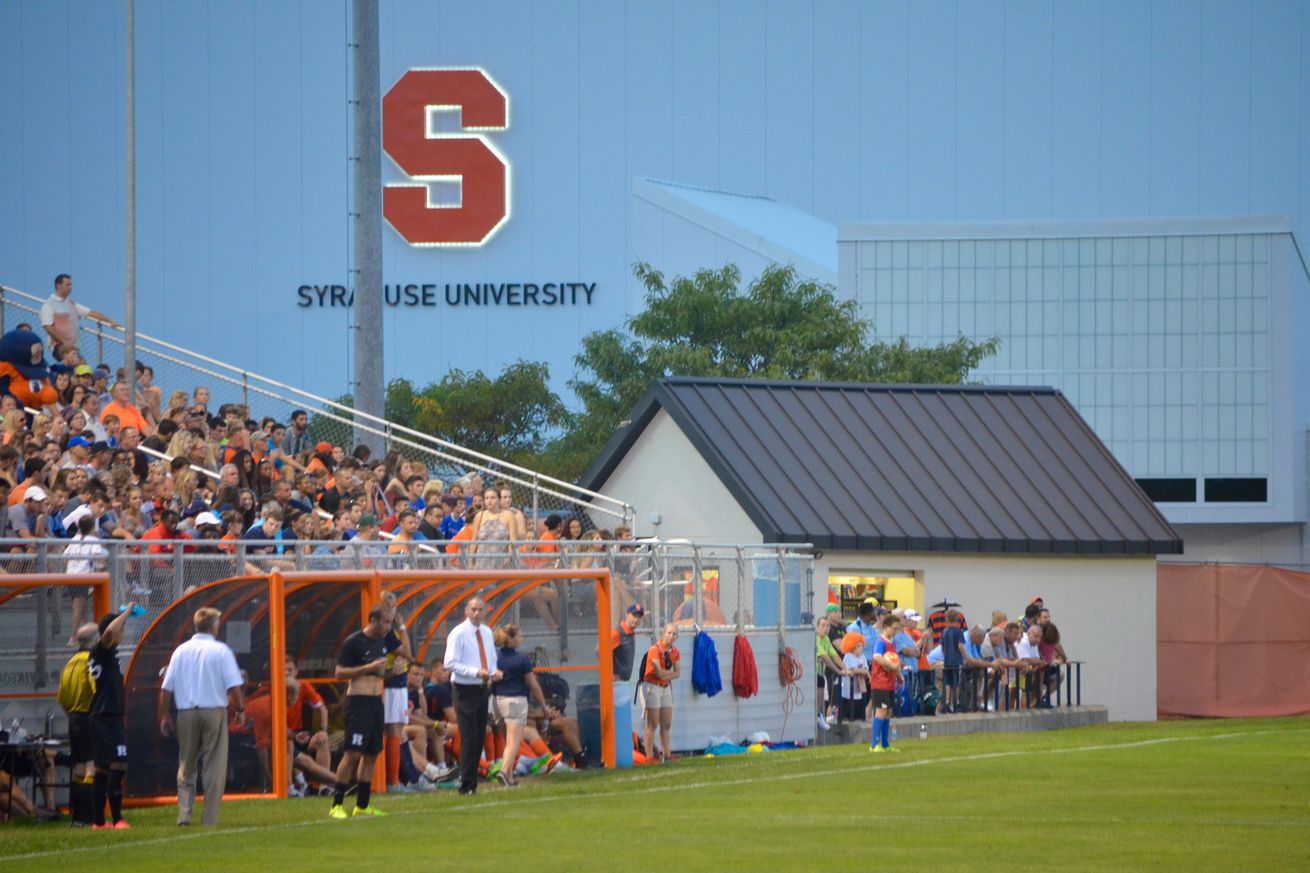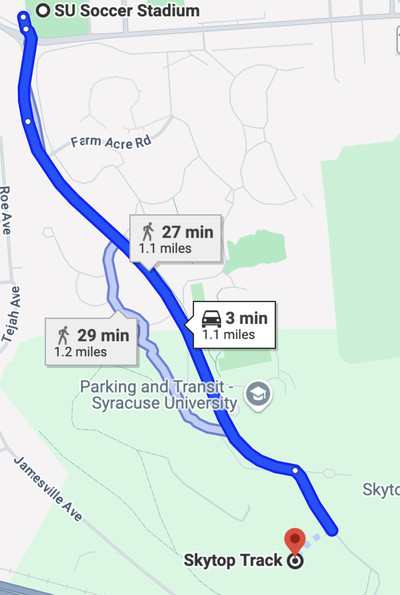
With near-sellout crowds for almost all of the men’s home games this season, could expansion be beneficial… or even necessary?
In the Syracuse Orange men’s soccer’s home opener against Niagara, nearly 2,000 fans attended, and the bleachers, hill, and Alumni Corner were packed to near capacity. With the success of the 2022 National Championship campaign giving the team even more leverage and pull for locals and students, the question may need to be asked: should SU expand or improve its soccer stadium?
The season opener this year drew almost 2,000 fans, and ACC matchups such as Louisville and Pitt during the 2023 season, when SU was ranked as one of the top teams in the nation, also drew immense interest with 1,800 and 1,900 attendees, respectively.
The evening contest on September 2 against local rivals Le Moyne further emphasized this issue as over 2,100 fans (the sixth most in the stadium’s history) were registered to have attended the event, although it appeared that closer to 2,500 were in attendance by halftime.
The packed house at the Le Moyne game caused some issues for fans as many were left looking for open spots in the bleachers, congesting the main walkway and limiting visibility for some fans while leaving others stuck in large and tight crowds.
Rajan Joshi, President of the student-run fan organization Otto’s Army, noted that “I think it’s been great to see how many people have been coming to the games and supporting the team. They have had a lot of recent success, so it’s good to see them get their flowers.”
With limited capacity in the bleachers, which only round one side of the field, a large chunk of fans are relegated to sitting or standing in the grass on the hill behind one of the goals. While this setup can help the atmosphere in the stadium, it may also be a deterrent for some fans who don’t want to have to worry about standing on an incline or sitting on wet grass.
Joshi explained that although he thinks it is best for the Otto’s Army fans to position themselves behind the goal on the hill, “I think that for families, especially families with kids, they should have an area that’s safe with a bit more space.”
A large family showing up to the Le Moyne match would have struggled to find any seating in the packed bleachers. Joshi added that even by himself, “I went to the bleachers, and there wasn’t a spot for me to sit anywhere.”
Oftentimes, the worst-attended games over the last few seasons are the ones coming in or around snowfall or rainfall.
Furthermore, fans at the Le Moyne match could be heard complaining about the long lines at the singular food stand outside the stadium that only has the ability to serve two people at once. This is another department where the stadium could improve fan experiences.
On another beautiful evening on September 13, the SU Soccer Stadium saw over 1,700 fans in attendance for an ACC matchup with Virginia Tech, showing that there is interest and demand despite the team’s early-season struggles.
Although the recent matches against Canisius and Cornell demonstrated that there will be instances where the stadium goes unfilled, the fact that five out of eight home games this season have seen over 1,650 fans attend lends credence to the fact that there could be room for growth.
When asked for thoughts on the potential expansion of the stadium, the SU Athletics administration declined to comment. Head Coach Ian McIntyre didn’t have much to say but noted that it would “obviously be a great opportunity.”
“We’ve got an extremely supportive and knowledgeable Syracuse soccer community,” explained McIntyre. “It’s always wonderful to watch, but I think there’s even more space for us to grow.”
An additional argument as to why the Orange ought to look to expand the stadium is because they are falling behind their ACC competitors in terms of soccer stadium size. If SU wants to keep pace with the rest of the league, they will have to expand and grow.
In ranking by capacity, the SU Soccer Stadium currently stands as the second smallest stadium in the ACC. The Stadium is at least two times smaller than the majority of the other ACC stadiums, and four or more times smaller than Edwards Stadium (Cal), Riggs Field (Clemson), Koskinen Stadium (Duke), and Klökner Stadium (UVA). For a team that recently won a national championship, one would think that there would be more desire to grow the program.
One potential solution to these issues at the current stadium could be to introduce bleachers along the opposite sideline from the current set or to add bleachers on the hill behind the goal next to Alumni Corner. There is space in both areas for a smaller set of bleachers, but there could be issues with taking up too much space and limiting mobility.
Expanding around the field could also allow for a larger merchandise or concessions stand, which is currently located outside the stadium. This year is the first in which the team has sold jerseys at every game, and the opportunity to set up some kind of ‘merch stand’ may be beneficial to the program from a revenue standpoint.
Another, more extreme solution could be to uproot the stadium entirely by moving it across the road from the Skytop Track, where there is a massive open lot that certainly could have space for a larger stadium and stands. This venue could have the downside of being difficult to find and get to, but would offer more space, and probably more parking for fans.

At this point in time, many of the Athletics Department’s resources are likely focused around the Lally Center expansion and renovation and the JMA Dome’s renovations. Upon completion however, the expansion of the SU Soccer Stadium could be a simple, intriguing, and profitable next project.
We will have to wait and see if there are any developments on this front, but stay tuned for all updates on the work of Syracuse Athletics, and all things Syracuse soccer.
